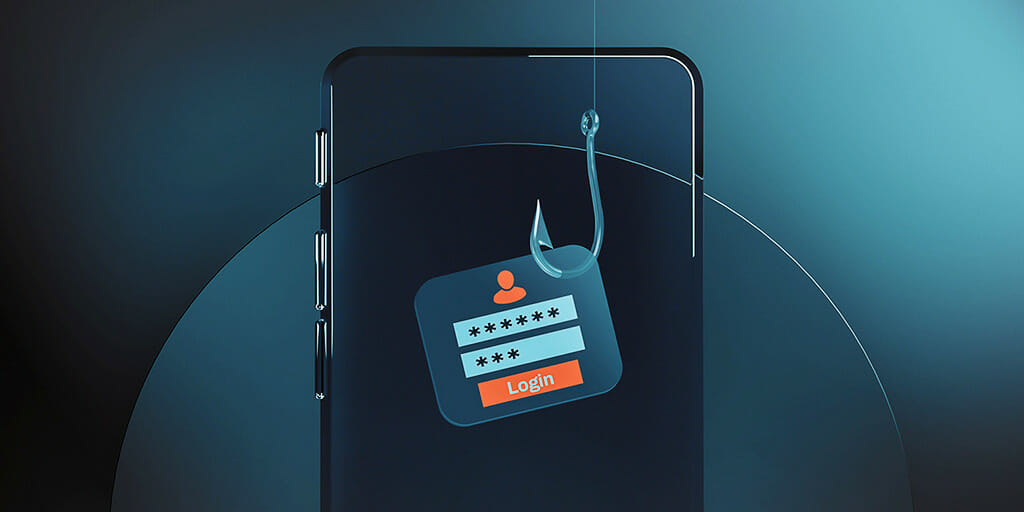Today’s fast-paced digital environment has made our smartphones an integral part of who we are. They are essential to our ability to communicate, bank, shop, and even work. But there’s a big risk associated with this convenience: mobile phishing. Phishing attempts on mobile devices are becoming more common and aim to steal sensitive data from our devices. This blog seeks to inform you on the expanding danger of mobile phishing and offer doable precautions to shield your smartphone from online threats.

What is Mobile Phishing?
Mobile phishing is a kind of cyberattack in which con artists use false emails or websites to try and deceive people into disclosing sensitive information, including credit card numbers, passwords, and other personal information. While traditional phishing mostly targets email, mobile phishing takes advantage of several channels, including malicious apps, social media, and SMS (smishing).
Common Tactics Used in Mobile Phishing
- Smishing (SMS Phishing): Smishing, also known as SMS phishing, is the practice of sending phony text messages purporting to be from respectable companies like banks or service providers. Frequently, these communications include links to phony websites intended to steal personal data.
- Email Phishing: A variation on regular phishing that is designed to seem good on mobile devices. These emails frequently contain malicious links or attachments and look like official correspondence from reliable sources.
- Social Media Phishing: Social media phishing is the practice of cybercriminals using social media platforms to trick victims into clicking on dangerous links by sending false messages or fabricating profiles.
- Malicious Apps: Attackers create fake apps that, when downloaded, can steal personal information or install malware on the device.
Real-World Examples
- Banking Scams: Typically, this takes the form of a text message purporting to be from your bank alerting you to questionable activities and offering a link for account verification. When you click the link, a phony website that steals your login information is brought up.
- Package Delivery Scams: As e-commerce grows, con artists are using text messages to impersonate delivery services and ask you to click on a dangerous link to confirm your delivery details.
- Social Media Scams: Phishing communications on social media sites such as Facebook and Instagram, frequently posing as presents or urgent news, deceive users into clicking on dangerous links.
How Mobile Phishing Works
- Reconnaissance: Through social engineering, data breaches, or publicly accessible information, attackers learn details about their targets.
- Crafting the Deception: By using the information gathered, attackers craft messages that seem authentic and come from reliable sources.
- Delivery: Via SMS, email, social media, or rogue programs, the victim receives the misleading message.
- Exploitation: The victim clicks on a link or downloads an app because they think the message is real and follow the instructions.
- Execution: The hacker installs malware or pilfers confidential data, which can result in identity theft, monetary loss, or additional cyberattacks.
Impact of Mobile Phishing
- Financial Loss: Fraudulent transactions or the theft of bank account information can cause victims to sustain large financial losses.
- Data Breaches: Data breaches can result in identity theft or business espionage due to the exposure of sensitive information.
- Reputational Damage: Phishing assaults have the potential to undermine customer confidence and harm a business’s reputation.
- Operational Disruption: Phishing attacks have the potential to stop activities of a company, especially if the virus gets into the network of the company.
Protecting Against Mobile Phishing
- Implement Multi-Factor Authentication (MFA): Impose an MFA requirement on sensitive account access. By doing this, you may increase security and make it more difficult for hackers to obtain illegal access.
- Educate Users: Employees and users should receive regular training on the dangers of mobile phishing and how to spot shady texts. Stress how crucial it is to confirm the legitimacy of requests, particularly when they concern private data or money exchanges.
- Use Security Software: Install reputable security apps that offer phishing protection, malware scanning, and real-time threat alerts.
- Enable SMS and Email Filtering: Use filters to block messages from unknown or suspicious sources. Many email and SMS services offer built-in filtering options.
- Be Cautious with Links and Attachments: Refrain from opening attachments or accessing links from unidentified sources. Check the URL and search for any indications of phishing to confirm the authenticity of links.
- Verify App Authenticity: Download software only from authorized app stores, such as the Apple App Store or Google Play. Examine app reviews and permissions prior to installing.
- Keep Your Device Updated: Regularly update your smartphone’s operating system and apps to patch vulnerabilities that attackers could exploit.
- Monitor Accounts Regularly: Regularly check your bank and credit card statements for unauthorized transactions. Report any suspicious activity immediately.
- Implement Caller ID Verification: Callers should have their identities confirmed, particularly if they ask for private information. To assist in identifying fake calls, employ caller ID verification techniques and technologies.
- Use Strong Passwords: Create distinct, difficult passwords for every account. Think about managing your passwords with a password manager.
Conclusion
A rising menace that takes advantage of our dependence on cellphones for both personal and professional tasks is mobile phishing. You and your company can guard against these cunning dangers by being aware of how these attacks operate and putting strong preventive measures in place. Remain watchful, instruct users, and utilize cutting-edge security methods to protect yourself from the always changing cyber danger landscape.
It takes more than just technology to defend your smartphone against cyberattacks; you also need to develop a cautious and informed mentality. You may considerably lower your risk of falling victim to mobile phishing and safeguard your personal and business information by following the instructions provided in this blog.
